
Our Process
A Farm to Cup Coffee Journey
Javataza was founded on a desire to support sustainable coffee farming practices that provides value to every party involved in the coffee chain. Our farm-to-cup coffee model (sometimes referred to as “Direct Trade” enables us to do this. With employees and partners on the ground in Central America, we are able to be a full farm to cup coffee company. This enables quality control and best farming practices while ensuring that the farmers are getting paid well for their product. Here in the United States we are committed to state-of-the art equipment and processing of our coffees. Our computerized profile roaster guarantees consistency of roast and we work hard to get your coffee to you while it is still fresh. We are sold on this farm to cup coffee model!
From Farm to Cup: A Photo Journey
1. Growing Coffee
Growing Coffee
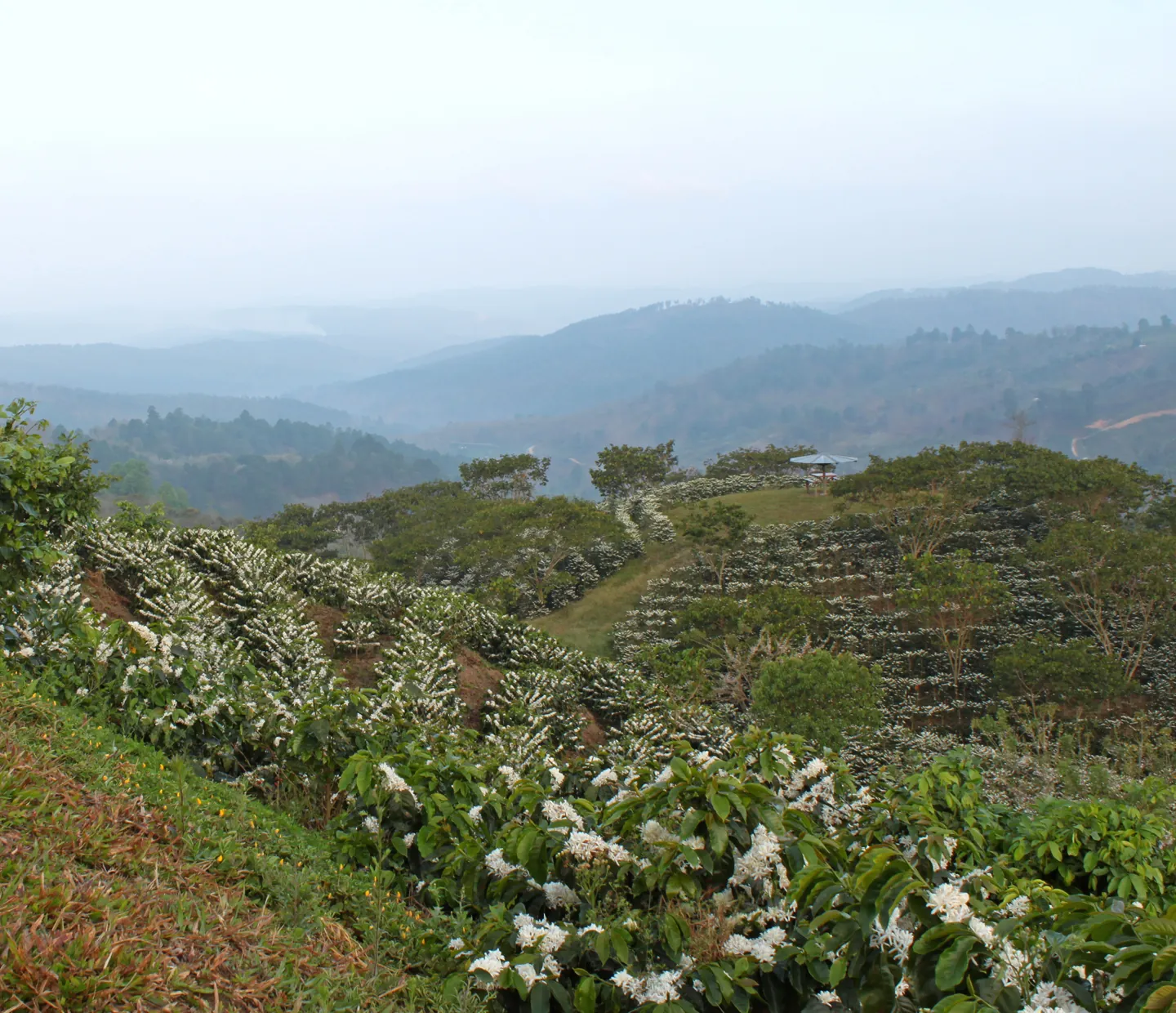
Coffee Fields in bloom. These blooms tell of good things to come in a few months. Every year as the trees blossom and fruit begins to grow, our farmers stay busy keeping weeds under control, feeding the coffee trees, and doing everything they can to ensure a quality crop of coffee cherries. The more personal care each tree receives, the better they produce.
Growing Coffee
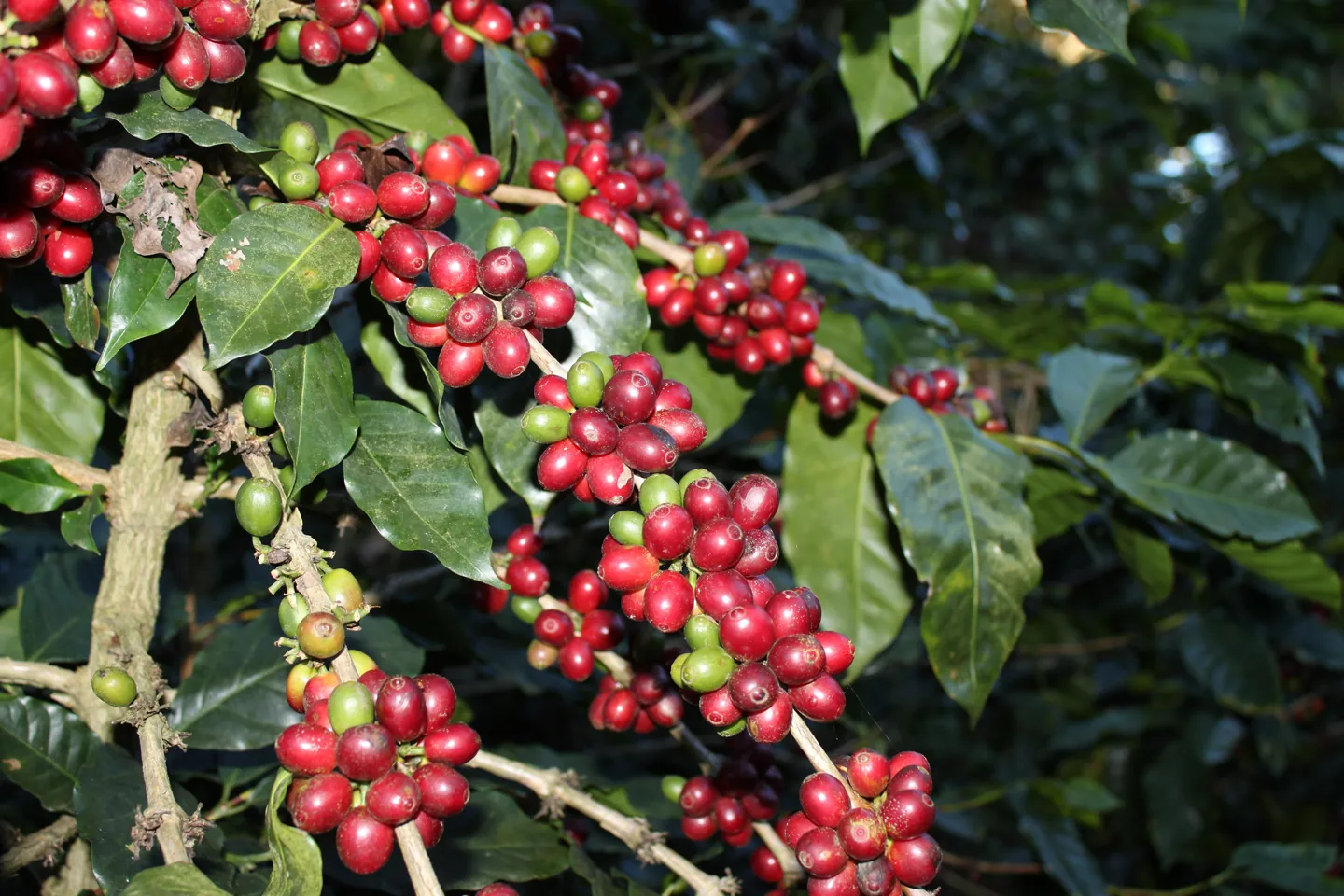
Ripe coffee berries on a tree. The coffee fruit often begins to ripen in November. That is when the busy stage starts.
2. Harvesting Coffee
Harvesting Coffee
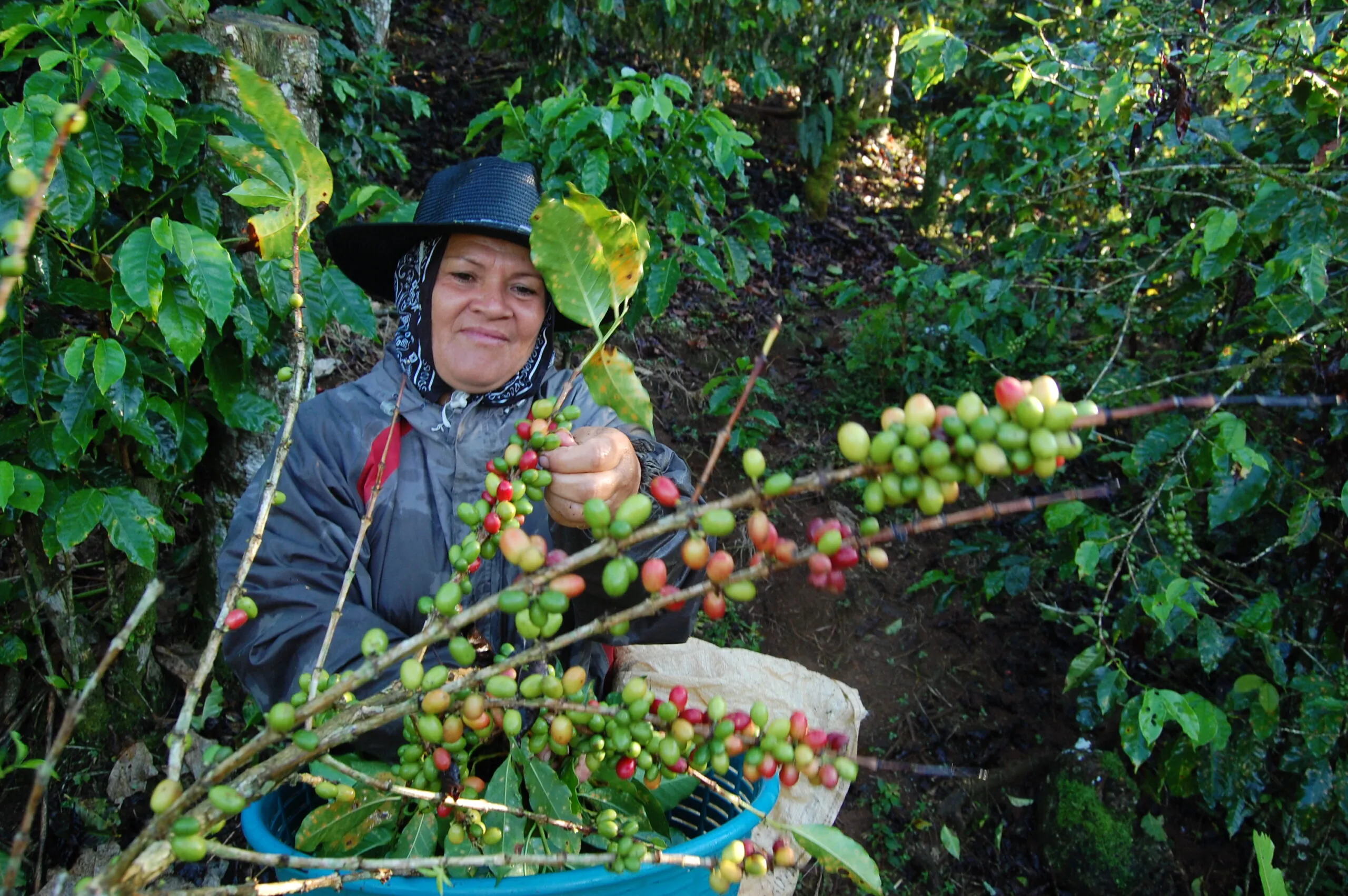
A coffee picker sorts through the coffee berries on the tree, picking ones that are ripe.
Harvesting Coffee
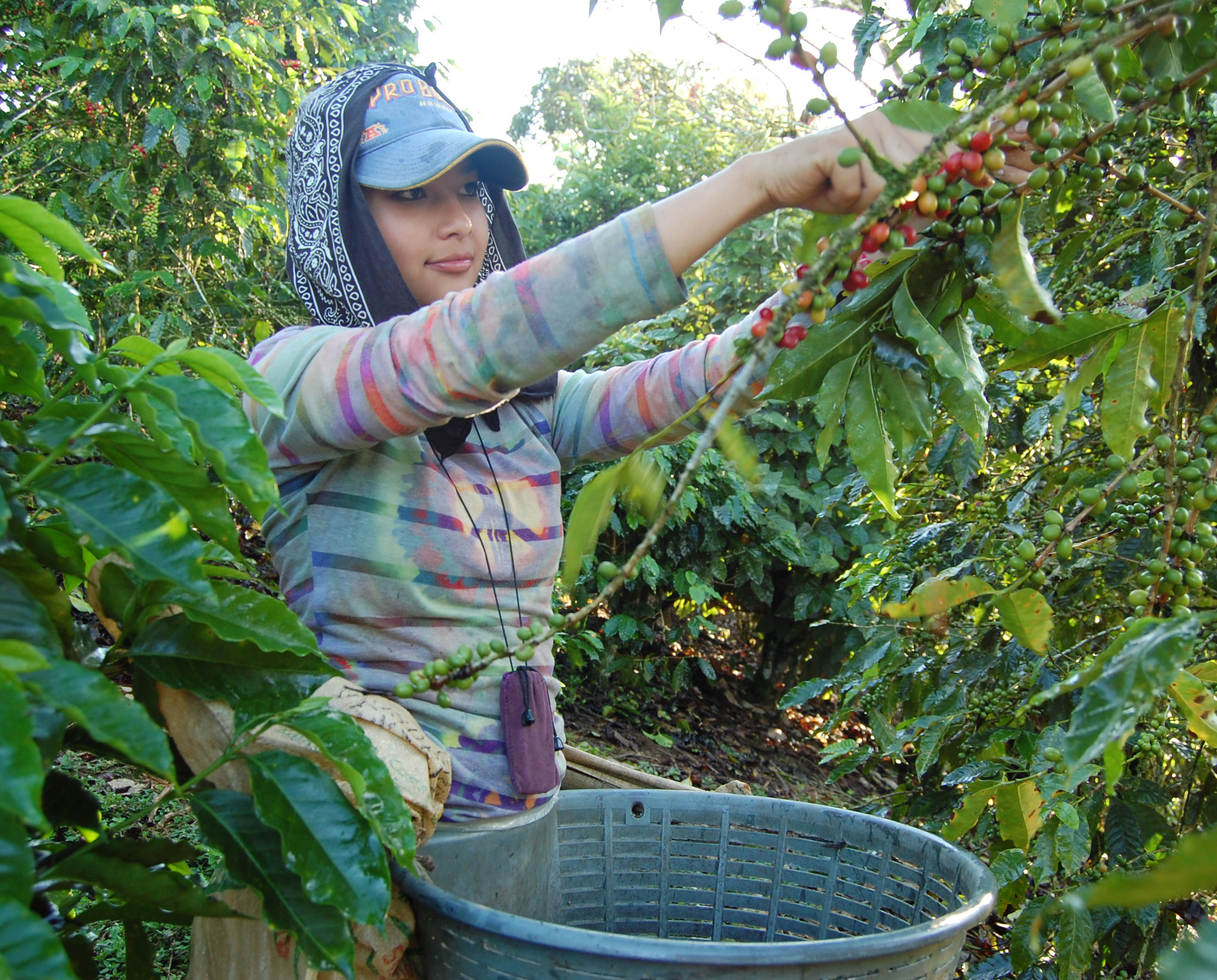
The coffee pickers wear baskets around their waist that they pick into.
Harvesting Coffee
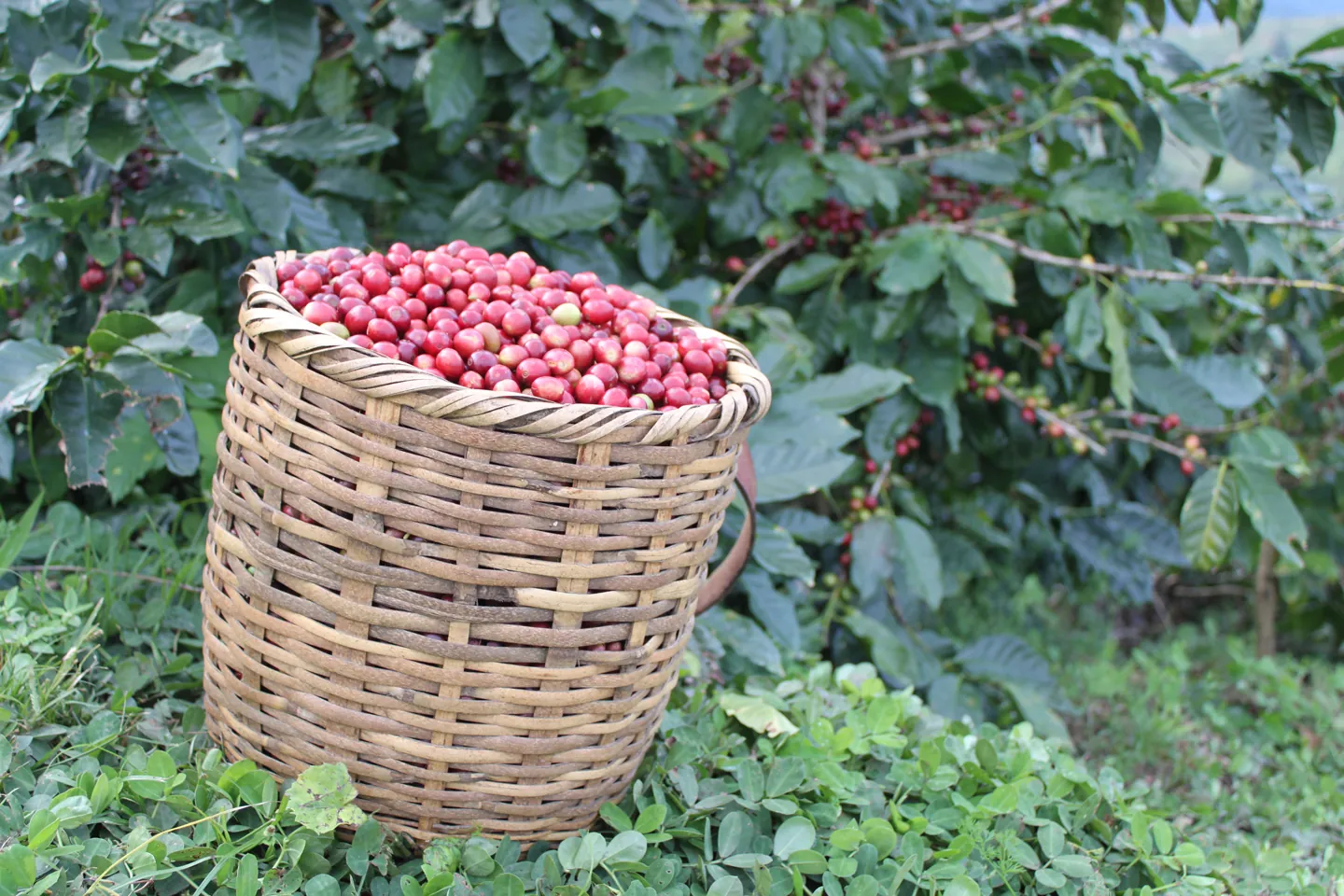
A basket full of ripe coffee cherries.
Harvesting Coffee
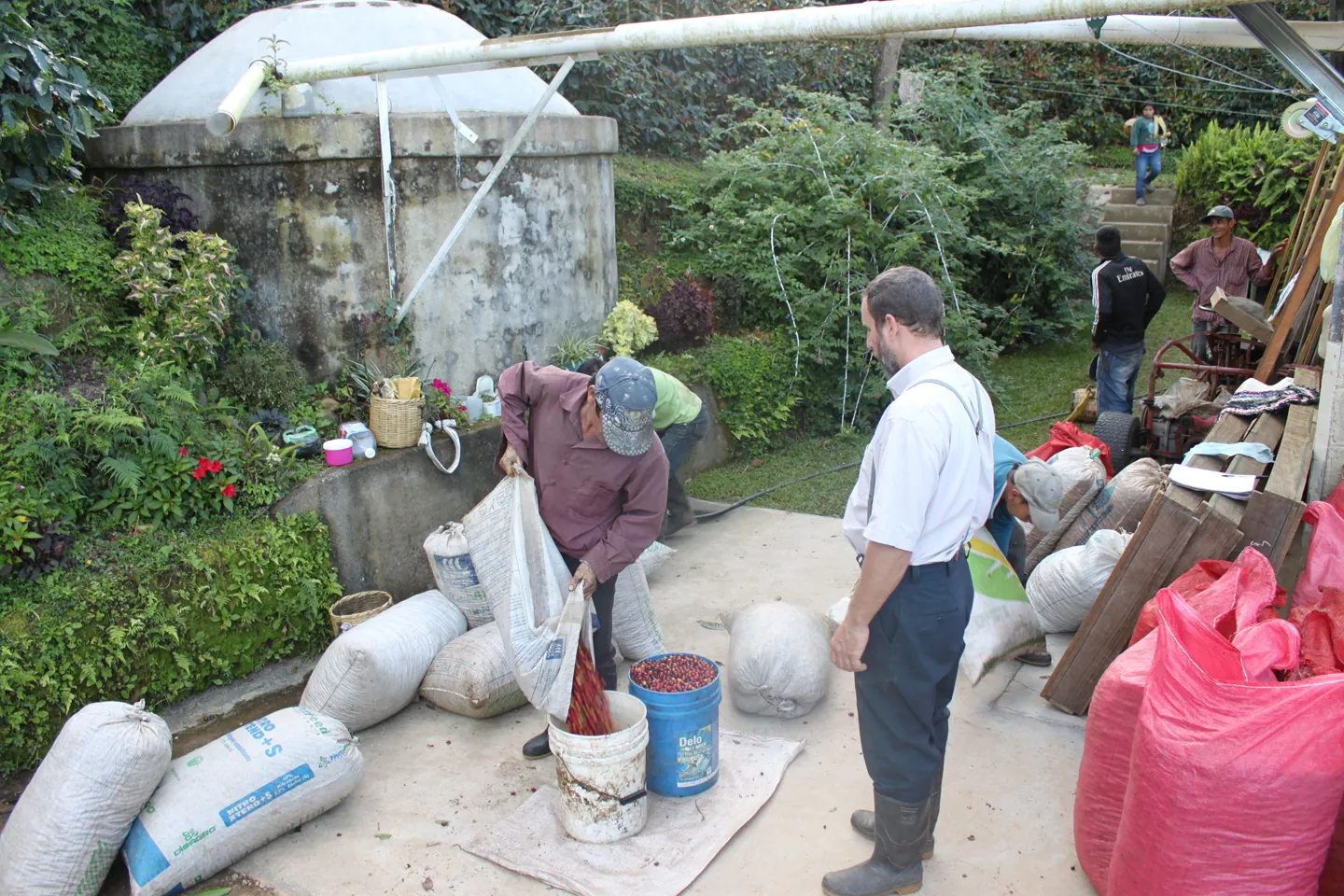
Most farmers pay their workers by the amount of coffee they pick. Here workers are measuring out their coffee pickings for the day.
Harvesting Coffee
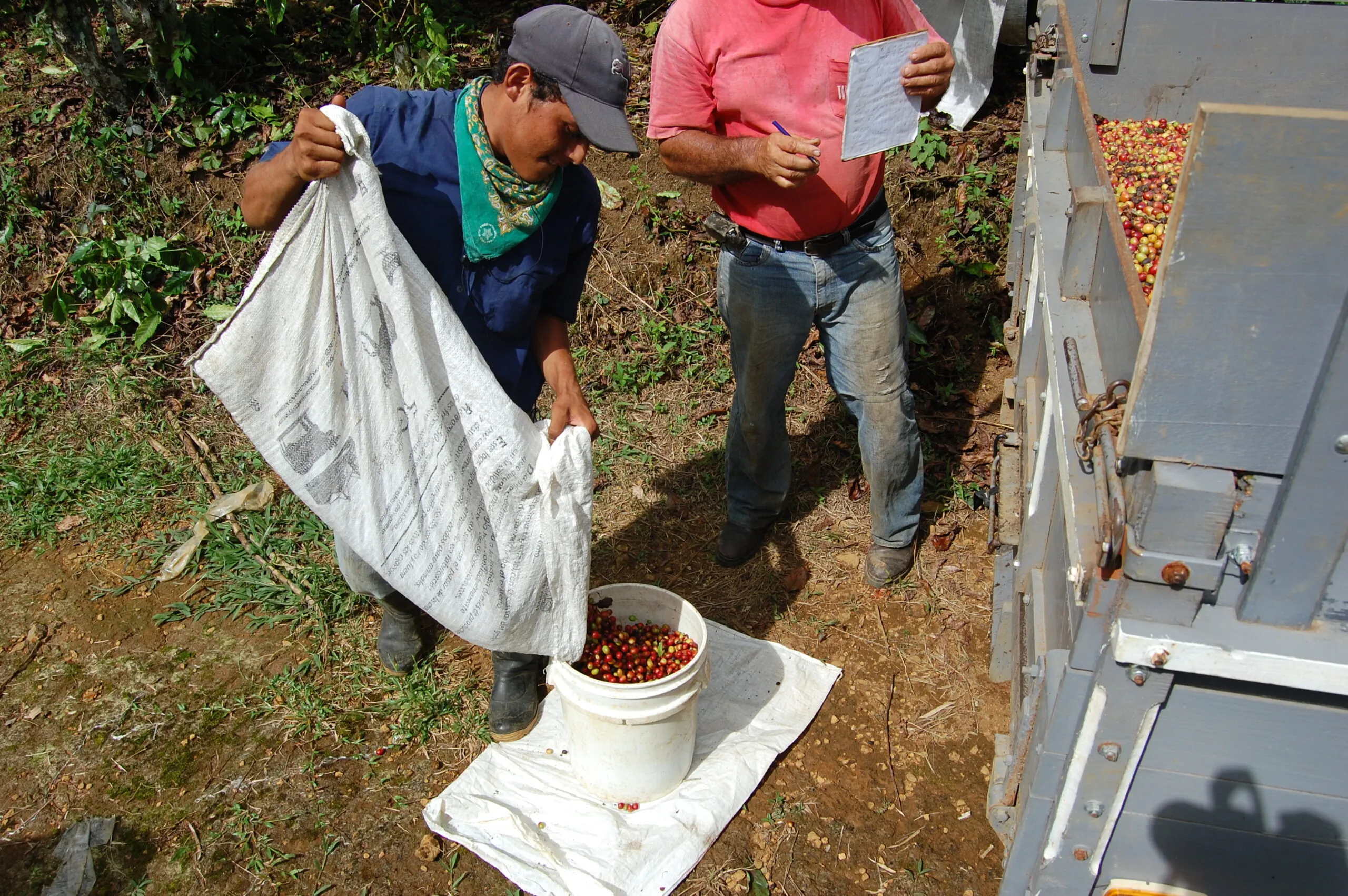
Recording the day’s amount of coffee picked. Because Javataza pays a premium price for coffee, our growers can pay their employees well also. Everybody in the coffee chain benefits from this direct trade model of buying and selling coffee.
3. Sorting and Washing
Sorting and Washing
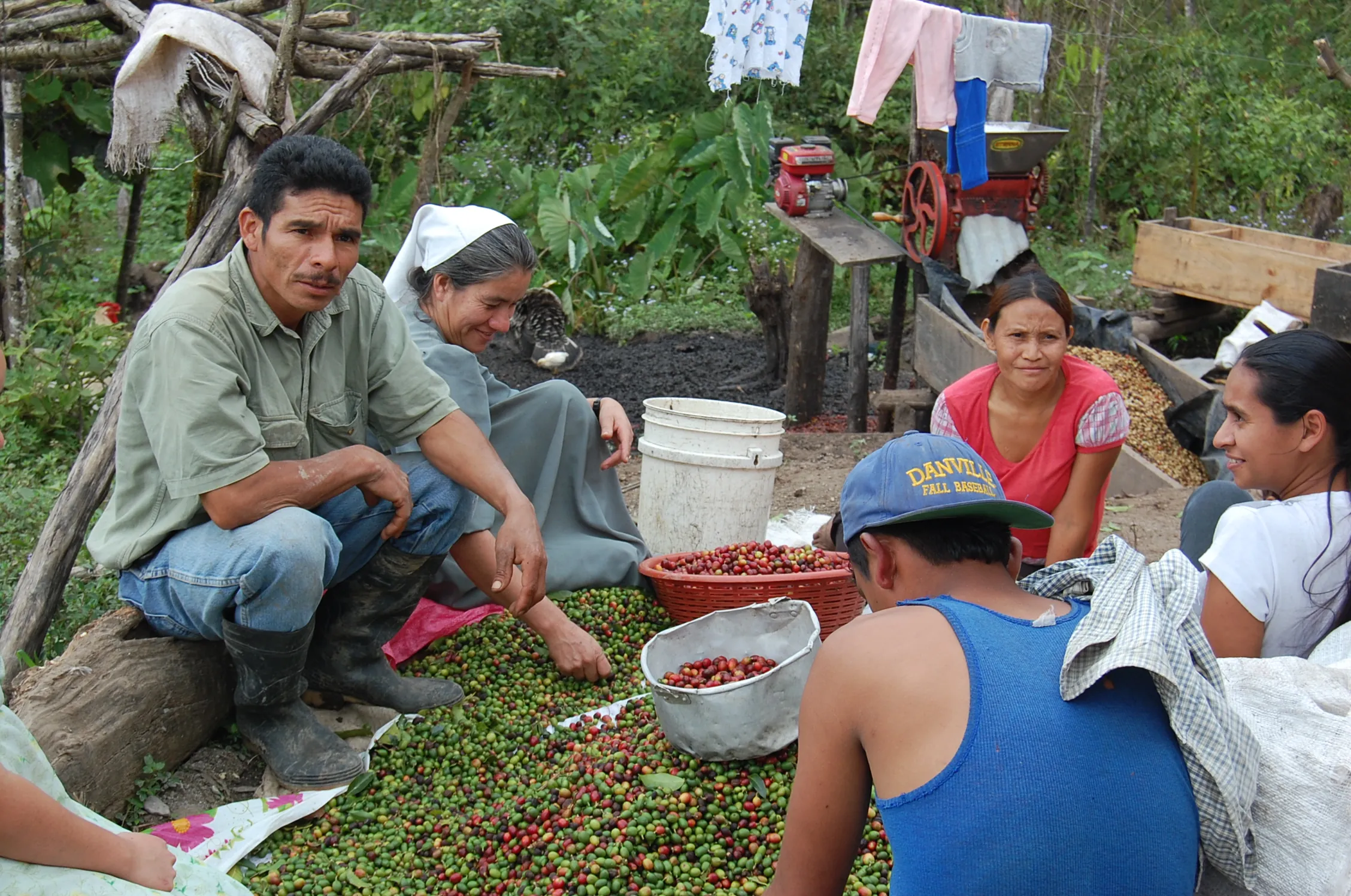
Here coffee fruit is being sorted out, making sure that only ripe coffee is processed. When the cherries are not ripe yet, the coffee bean (seed) will not have a chance to absorb the good flavors that come from a ripe cherry. Javataza encourages good quality control, even in the harvesting process.
Sorting and Washing
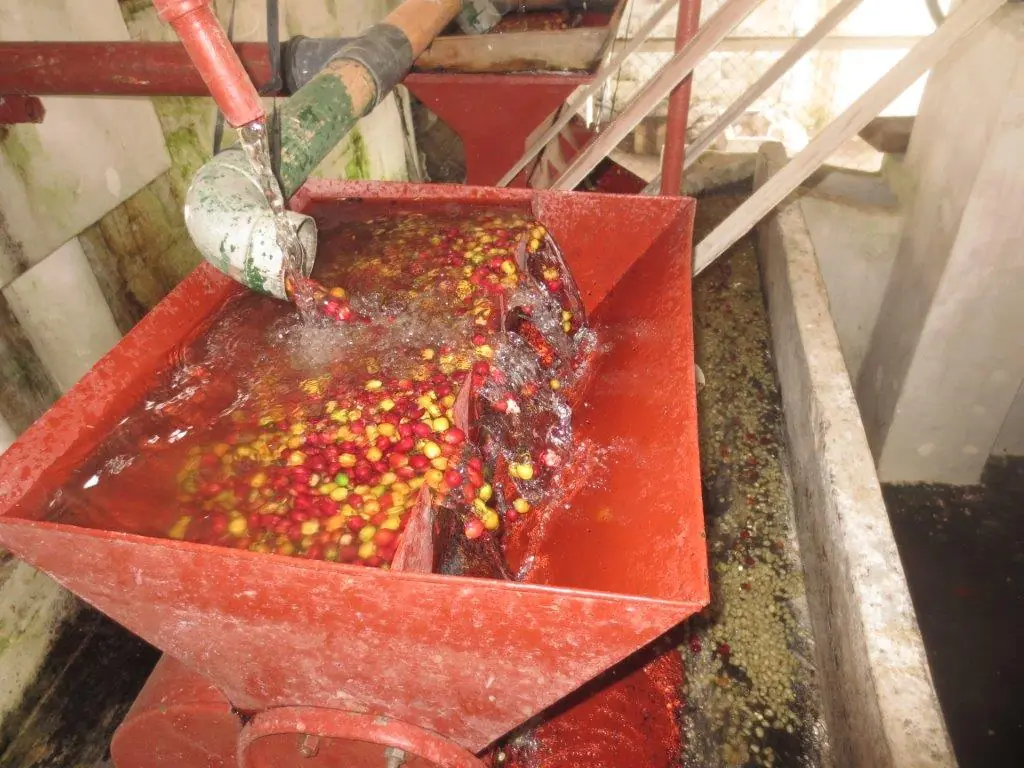
In this photo, coffee cherries are being depulped, separating the coffee fruit from the coffee seed (bean).
Sorting and Washing

After the coffee beans are separated, they are then washed. In this picture you can see a washing setup that runs the beans through troughs of water.
4. Drying
Drying
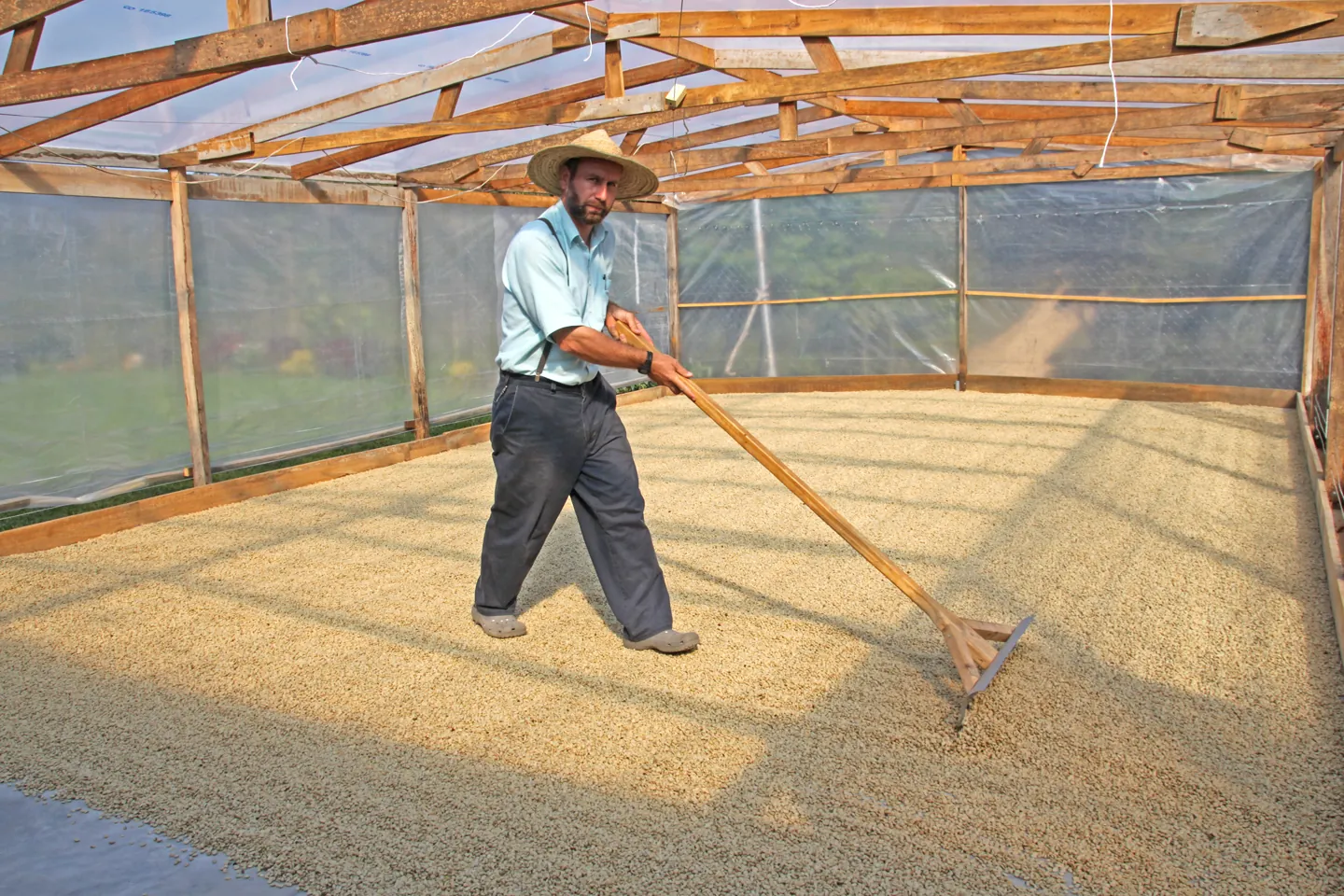
After the beans are washed, most times they are spread out, either in the sun or in greenhouse systems to dry out. This is the pre-drying process.
Drying
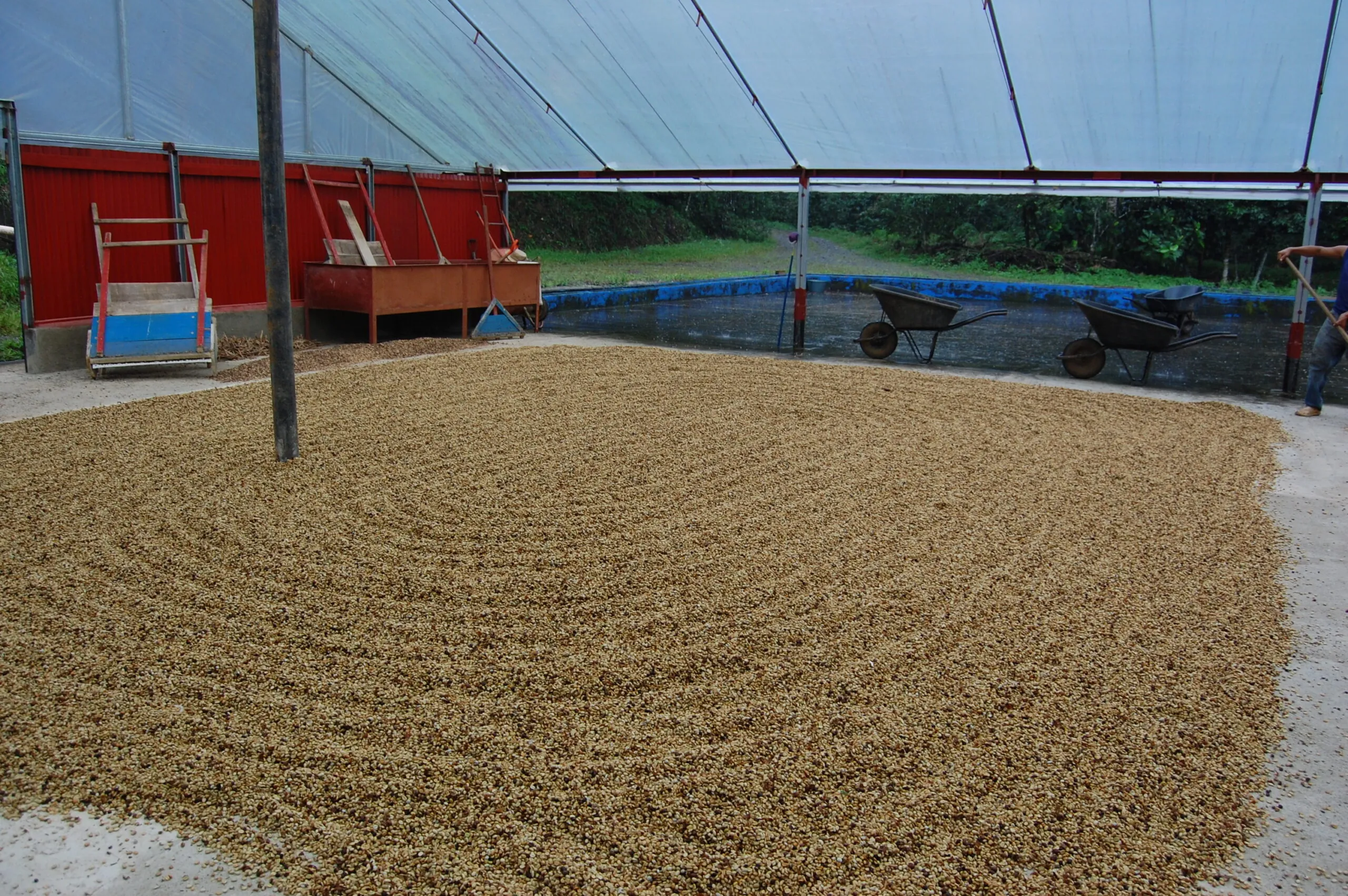
In the pre-drying process, coffee beans are dried down to a 50-30% moisture level.
Drying

This hoop-style greenhouse is a great setup for pre-drying coffee.
Drying
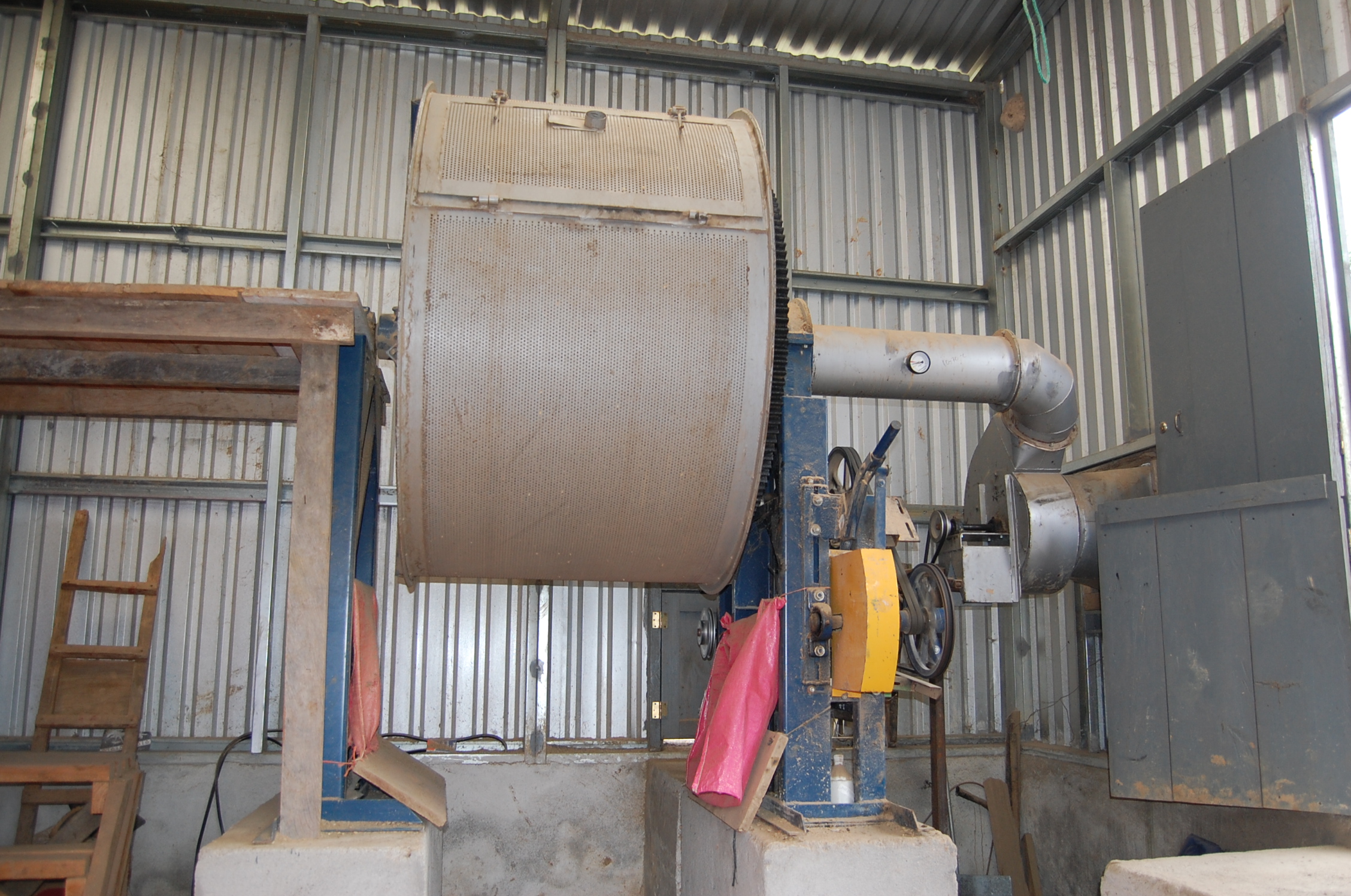
When the moisture levels are low enough the coffee is moved into a dryer. Many of our suppliers use a wood-fired dryer. Coffee will often dry in these for more than 24 hours. During this time the operator needs to be checking moisture levels often. Most times the coffee will be brought down to a 11-12% moisture level.
5. Processing and Exporting
Processing and Exporting

After it is dried the coffee is stored in either bags or bins until there is enough ready to ship to the final milling and exporting facilities.
Processing and Exporting
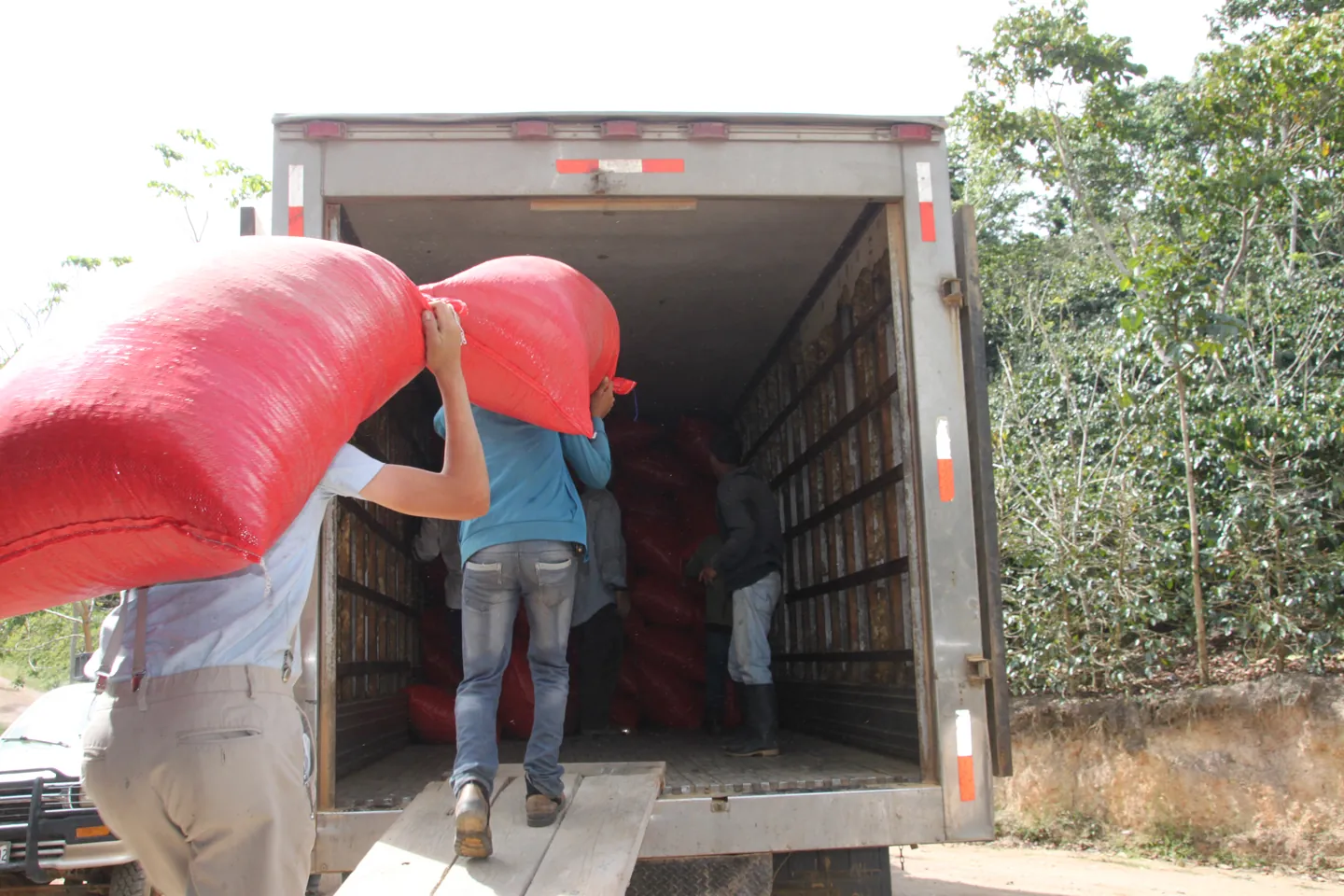
Here coffee is being loaded onto trucks to be taken to a facility for final processing, sorting, grading, and preparing to export. All our coffee is carefully documented so we know exactly which growers it came from, what time of the year it was processed, and more. Traceability of our coffee is a big deal to us.
Processing and Exporting
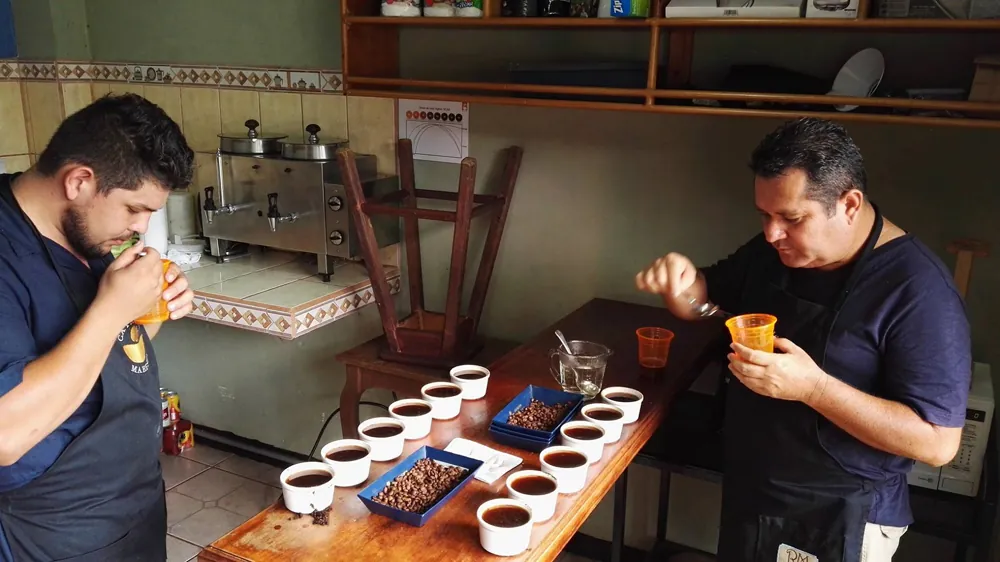
Cupping coffee samples from a coffee crop to give it a grade for quality.
Processing and Exporting
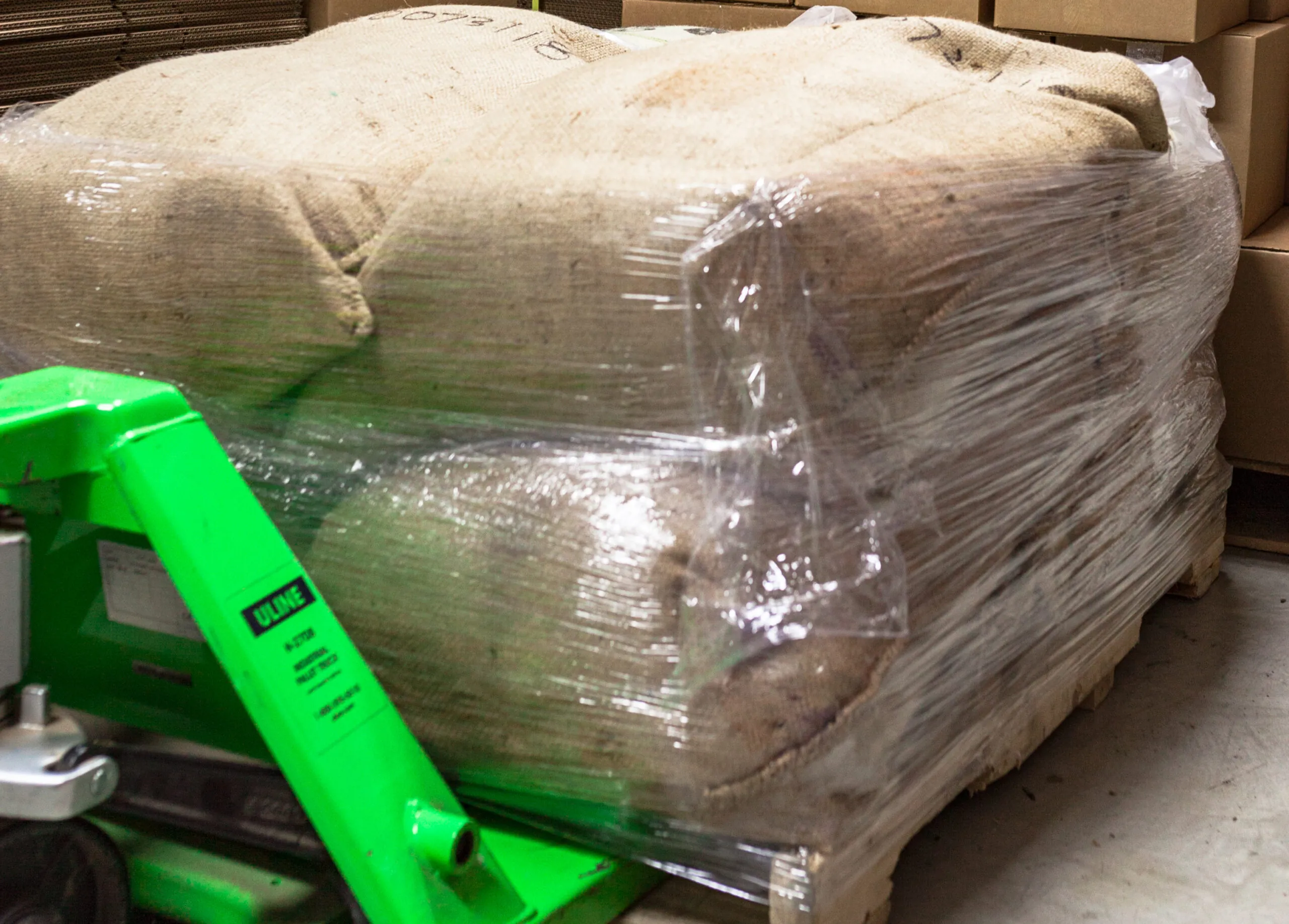
Coffee in large sacks on a pallet for exporting to our United States location.
6. Roasting and Bagging
Roasting and Bagging
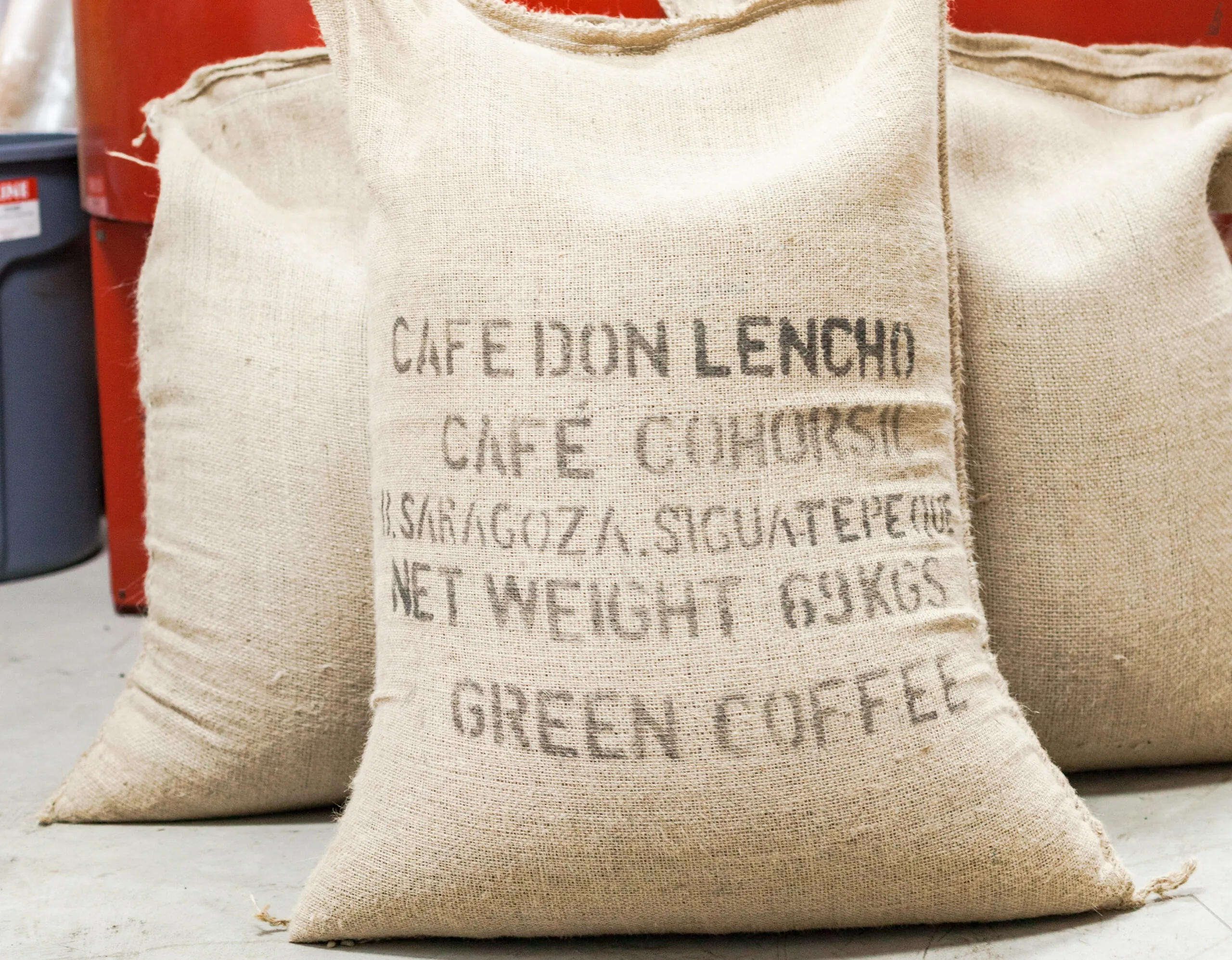
After we receive the coffee at our roasting facility in Pennsylvania, we carefully store it until it is time to roast.
Roasting and Bagging
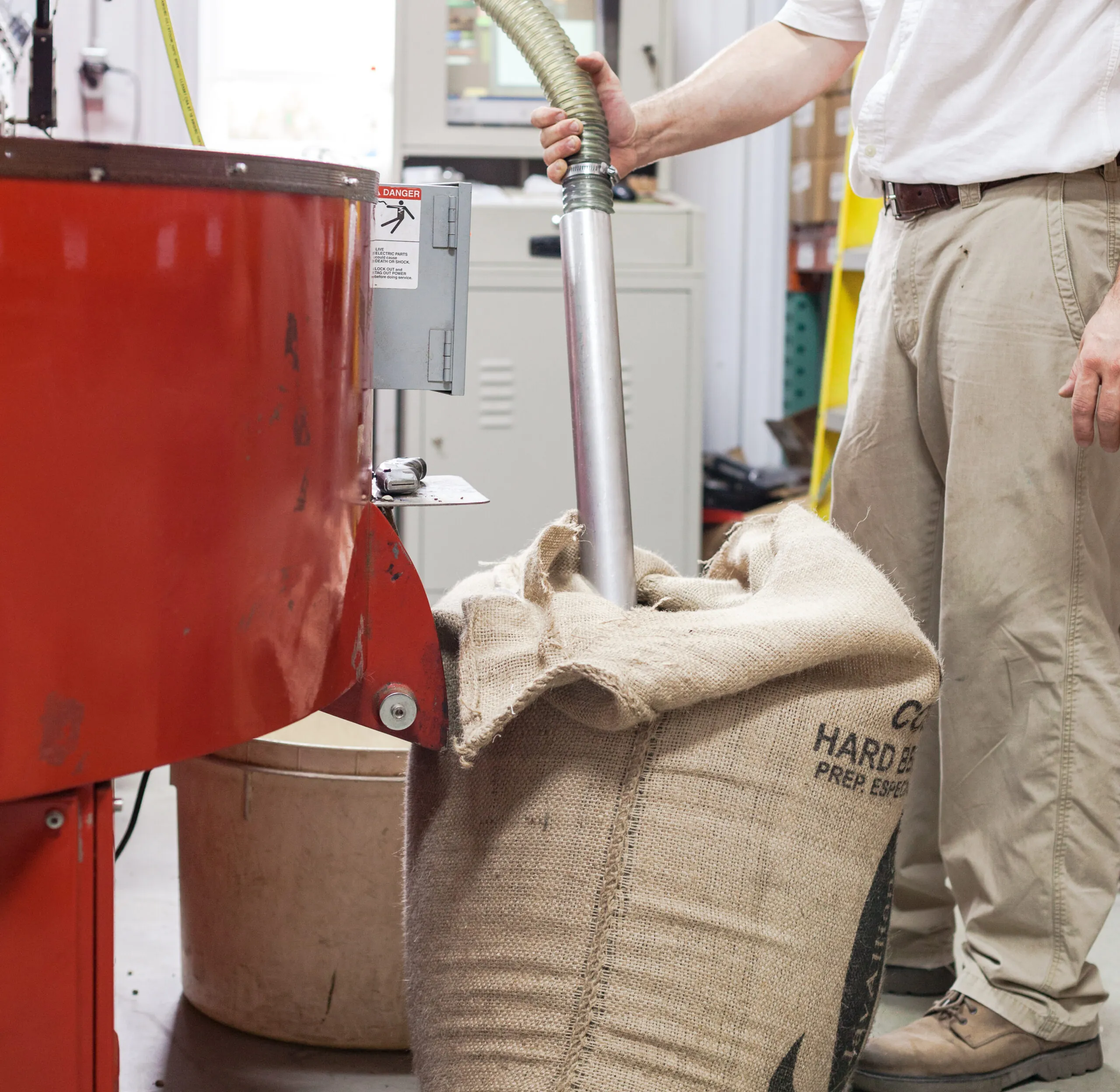
Filling up our roaster with a vacuum tube.
Roasting and Bagging

The computer controls for our state-of-the-art profile roaster. This system allows us to create individual roasting profiles for each kind of coffee bean. The consistency and minute control it provides is part of the reason for our coffee’s premium flavor.
Roasting and Bagging
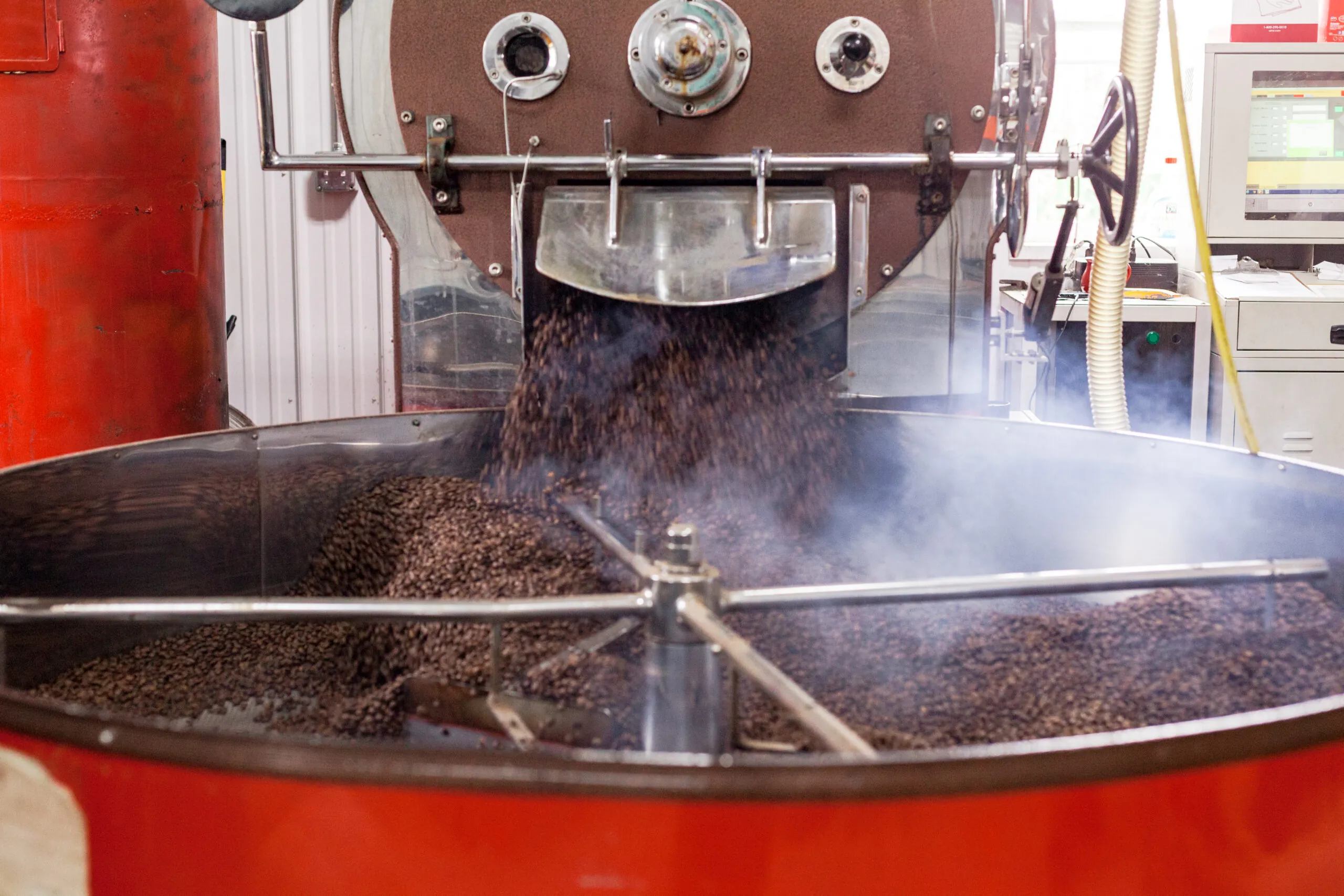
Here coffee is being emptied from the roaster into the cooling trough when a roast is complete.
Roasting and Bagging

Our cooling trough is equipped with a vacuum system that sucks a lot of air through the beans while they are being stirred to allow them to cool down quickly.
Roasting and Bagging
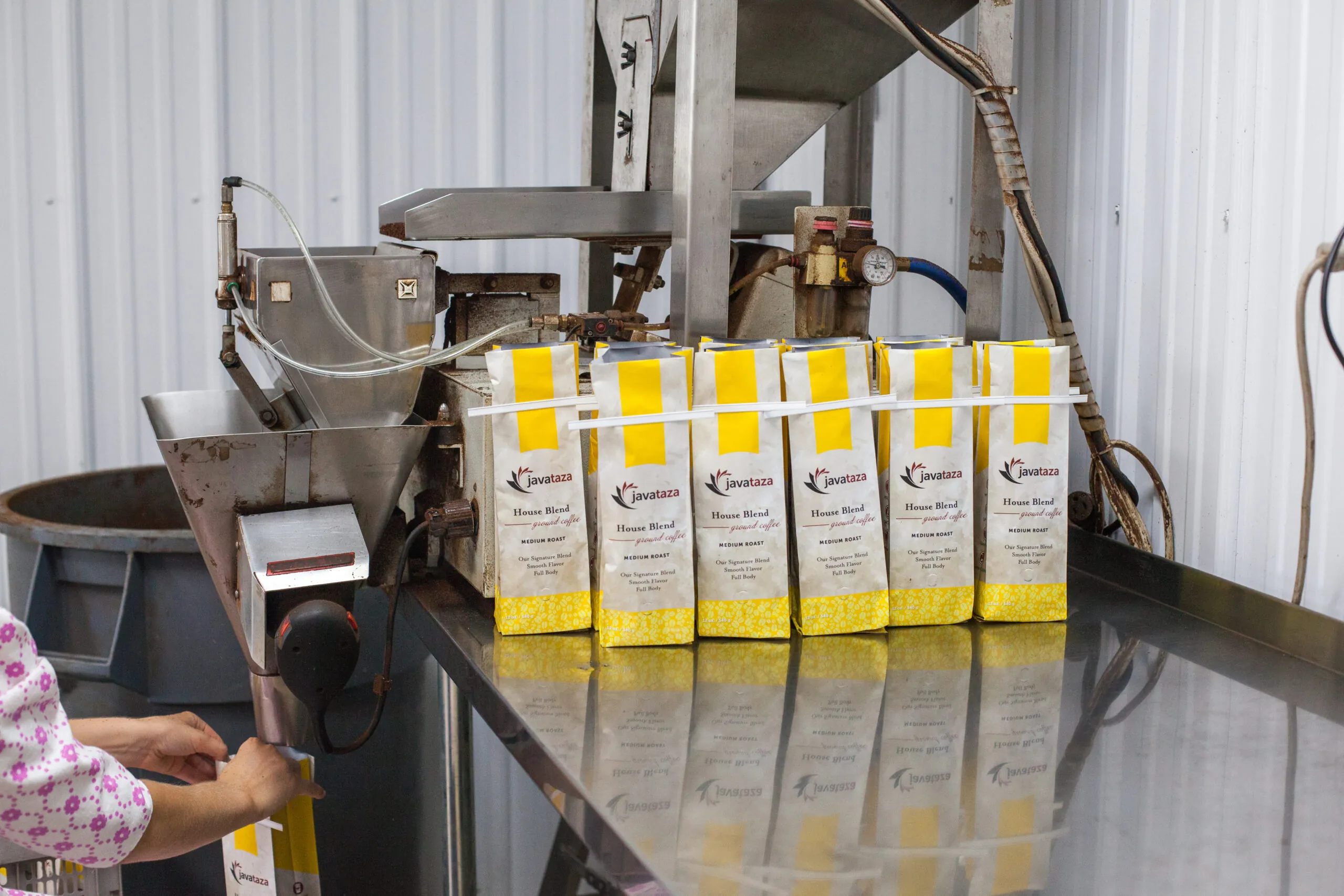
An employee runs our bagging machine, filling each bag with an preset measured amount of coffee that is automatically measured and dispensed.
Roasting and Bagging
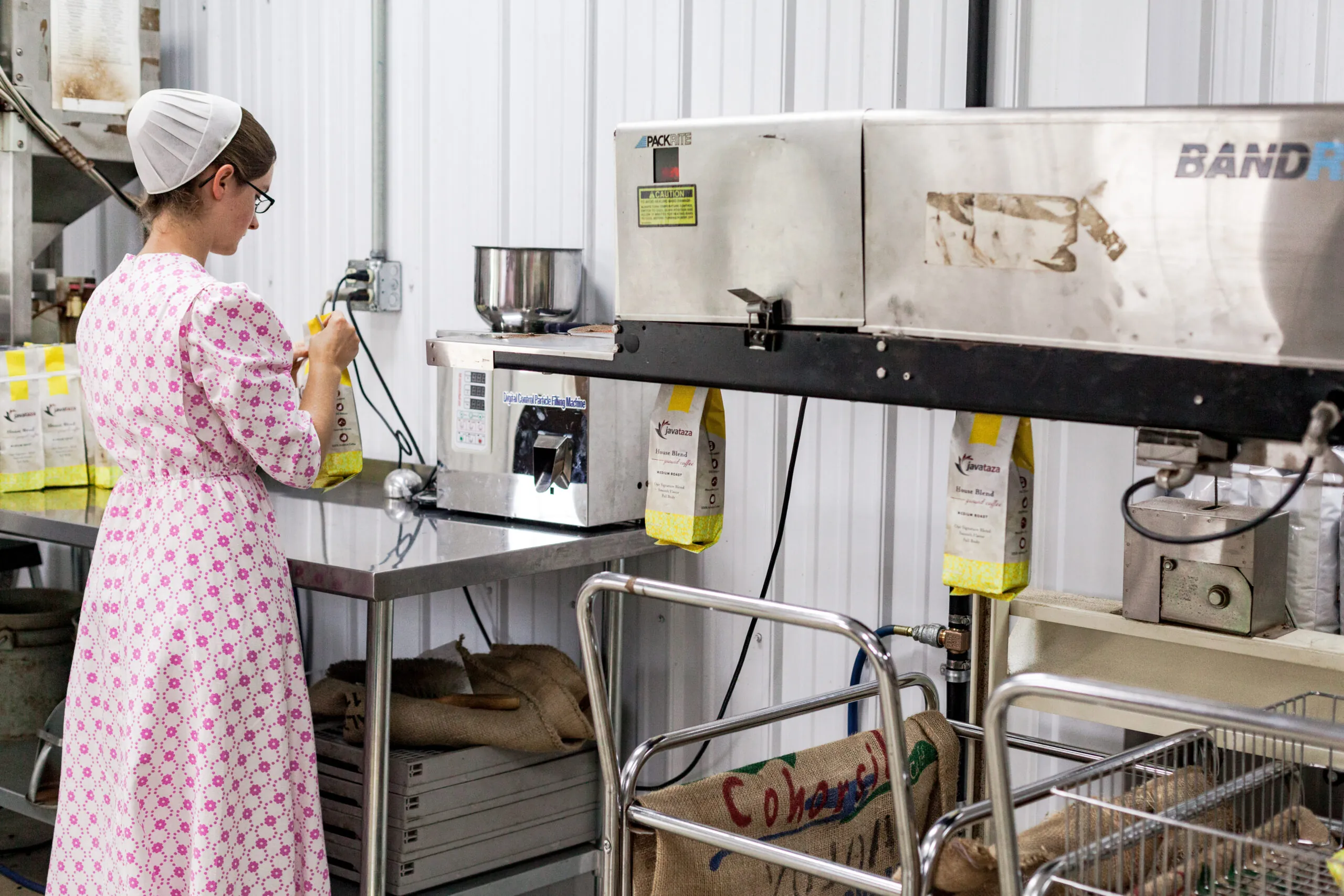
The coffee bags are then run through a heat sealer before being boxed up.
Roasting and Bagging
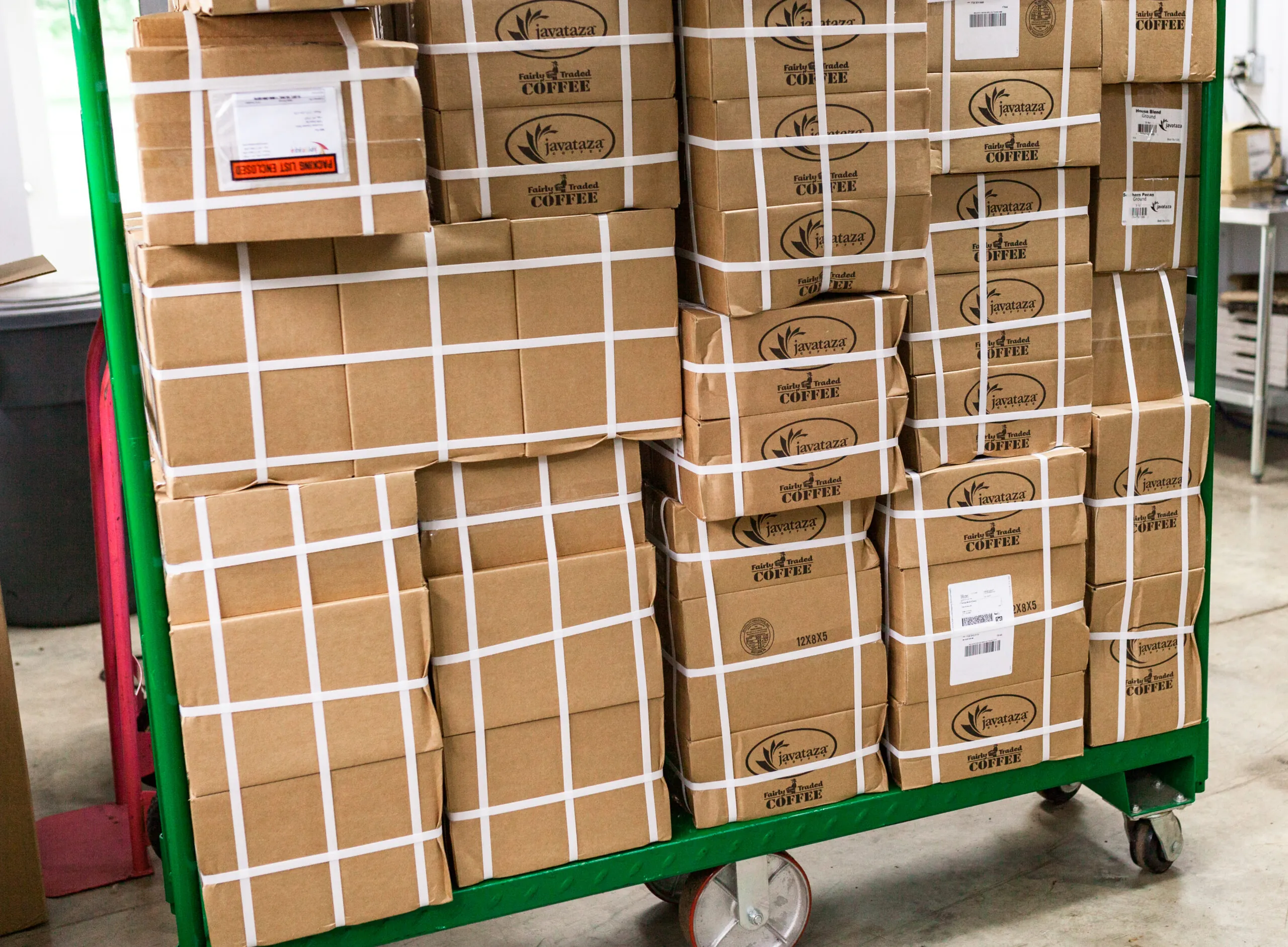
Here is where you enter the process. When orders are placed we package them up for shipping and send them out as quick as possible. The fresher the coffee, the better your cup of coffee.
7. Brewing and Drinking
Brewing and Drinking

The best part of this whole journey. And you get to be a part of it.
Join the Process
Your part is the fun part. There’s nothing like sipping on a fresh cup of gourmet coffee guilt-free. Don’t wait to become part of the process.
Subscribe
Get added to our email list to receive Javataza updates!

©2024 Javataza Coffee LLC | Privacy Policy